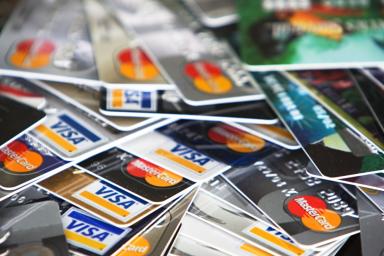What are intellectual property rights?
As a small business owner, you're probably familiar with the need to protect your tangible business assets such as equipment, vehicles and premises.
But are you taking steps to protect your intangible assets - and do you know how to protect your intellectual property rights?
Intellectual property (IP) is everything that you, your business and your employees have created using your intellect.
It covers everything from your brand and logo to inventions that could turn into products or services.
All businesses need to know their intellectual property rights or run the risk of losing out financially or having their reputation harmed.
Intellectual property belongs to you and has a value.
It's surprisingly easy for a competitor to use your intellectual property if you don't take action to protect it.
Intellectual property theft can be fairly minor - a competitor using a logo or copying your website - or incredibly harmful such as using your intellectual property to bring your invention to market first.
Why are intellectual property rights important?
Disputes between businesses about intellectual property can run into millions of pounds in legal fees, compensation and bad publicity.
There have been countless legal tussles between large companies suing each other alleging theft of intellectual property.
British inventor James Dyson famously sued Hoover in 2000, with a court finding Hoover deliberately copied part of the technology behind the success of Dyson's bagless vacuum cleaners, according to The Telegraph.
Dyson took action to protect his invention, having spent 15 years creating over 5,000 prototypes before bringing it to market.
Costs can run into the millions. Apple took rival smartphone maker Samsung to court in 2012 claiming the South Korean company had stolen aspects of Apple's popular iPhone, in particular icon and packaging designs.
The result: in 2018 the case was resolved with Samsung paying Apple $539 million for infringing intellectual property.
Intellectual property is estimated to be worth more than tangible property for UK businesses, according to the Fast Facts 2017 report by the Intellectual Property Office.
In 2014, firms in the UK invested an estimated £133 billion in knowledge assets, compared to £121 billion in tangible assets.
Intellectual property definition
Intellectual property covers a lot of areas, including all types of creative and intellectual output.
If it has been created or invented, it's likely to be counted as intellectual property.
Intellectual property covers literary and artistic works such as books, articles, illustrations, photos, movies and music; performances of artists, musicians and other performers, and other broadcasts; inventions, scientific discoveries and research; industrial designs, and; names, logos, symbols, slogans, taglines and other identifying elements used by companies in business.
Intellectual property doesn't cover ideas themselves. Simply having a good idea for an invention doesn't count - IP is more about the result of the idea, such as a new product or service.
Although having an idea isn't protected, sketching that idea out and developing a prototype of a product is covered.
You can protect intellectual property using patents before you bring a product to market.
You can also sell and transfer intellectual property, and it can belong to one or more people, or a legal entity such as a business.
IP is protected in law, which means people can earn recognition or financial benefit from what they invent or create.
How to protect your intellectual property
There are several ways you can protect your IP.
If someone attempts to steal or copy your IP you can take legal action against them for IP infringement.
The route you take and the level of protection you get depends on what your IP is.
The good news is some of these rights are automatically granted and you don't have to do anything to obtain legal protection.
IP rights fall into four areas: copyright, trademarks, design rights and patents.
Copyright
This is an automatic legal protection given to original creative work such as writing, art, illustration, literary work, photography, music and sound recordings.
Books, articles, music recordings, software, architectural drawings, web content, graphic designs, TV, films and computer games are all covered by copyright.
You can choose to mark your work with the copyright symbol (©), your name and the year of creation, but whether you do or not does not affect the level of protection you have.
Copyright stops others from copying, using or distributing your work without your agreement.
Copyright exists until 70 years from the death of the original creator.
Trademark
A trademark protects a company's name, logo, colour or slogan - anything it uses to identify its goods or services.
This is not an automatic right. You must apply to register a trademark.
Once obtained, it lasts indefinitely as long as it is used and renewed every ten years.
During the process, you can use the symbol TM after the item you wish to trademark and ® once the trademark has been registered.
Once you have a registered trademark, you can stop others from using or copying your trademark.
You can also sell and license a trademark.
Patent
Patent protection is used to protect inventions, such as a product or process. It is not an automatic right.
You must apply for a patent.
Once awarded, you have the right to take legal action against anyone who makes, uses, sells or imports it without your permission.
To obtain a patent, your invention must be new, inventive and something that can be made or used.
Patents are the most difficult and most expensive form of IP protection to get with application typically costing around £4,000.
You will need help from a patent attorney or other professional to navigate the complicated application procedure, which can take up to five years to complete.
If awarded a patent, you will need to pay to renew it each year.
The legal action required to defend a patent can be costly.
Design rights
These automatically protect your design for ten years after it was first sold or 15 years after it was created - whichever is earliest.
You'll need to prove you created the design.
Design rights apply to the arrangement and shape of the design.
For greater protection you can register your design if it meets the eligibility criteria, such as a design you have created that is used in fashion or home furnishings.
Once you register your design, you have the right to stop others from using it for up to 25 years - although these rights must be renewed every five years.
You can let others use your design by selling or giving them a 'licence of right'.
How to establish your intellectual property rights
Begin by making a list of all your business's intellectual property so you can decide which you need to protect.
This can cover creative work, product design and innovations to company logos and slogans.
You can use the free IP Healthcheck tool on the Intellectual Property Office website to help you identify IP in your business.
To establish intellectual property rights, your IP must be unique.
Check to see if a person or company is already using, has invented or has already protected the IP or a similar IP.
Use trademark, patent and other online searches or consider using the services of a patent or trademark attorney.
For valuable IP, it's wise to seek professional advice from a patent attorney or a trademark attorney.
You can find patent attorneys at the Chartered Institute of Patent Attorneys and a trademark attorney at the Chartered Institute of Trade Mark Attorneys.
It's worth keeping records of any intellectual property creation and development.
Records can include dated files, and signed and dated copies of drawings, designs and drafts.
You should apply to register your IP as soon as possible, as registering takes time.
Trademarks can take around six months to be granted and patent may take anywhere from two and five years.
Fast track patent approval is possible for inventions that offer an environmental benefit and those that have already received a positive examination report from an international patent office.
Intellectual property rights are territorial, giving protection only in the country in which they are registered or awarded.
Registering your IP in the UK therefore doesn't give you protection abroad - others may use or copy your IP internationally without infringing your rights.
To protect your intellectual property rights abroad, you will need separate international patents, design rights and trademarks relevant to the countries in which you trade.
The Intellectual Property Office has country guides that can help you navigate what's required in key markets worldwide.
The World Intellectual Property Office provides a list of all national IP offices globally.
Once registered, be sure to display any copyright, trademark and ownership notices alongside your IP to discourage others from stealing it.
It also makes it easier to pursue legal action as the offending party would have been aware that your IP was protected.
Intellectual property law - tackling IP infringement
Protecting your IP can result in the need to take legal action to seek redress and stop a third-party from infringing your IP.
Often a cease-and-desist letter from a solicitor will be enough to stop the infringing party.
For small claims below £1,000 consider using the Intellectual Property Enterprise Court (IPEC) small claims track.
For larger claims, you may need to go through the Intellectual Property Office or take a claim to court.
In all cases, it's vital to get professional legal advice.
Learn more about entrepreneurship with our free online courses in partnership with the Open University.
Our free Learn with Start Up Loans courses include:
Plus free courses on finance and accounting, project management, and leadership.
Disclaimer: The Start -Up Loans Company makes reasonable efforts to keep the content of this article up to date, but we do not guarantee or warrant (implied or otherwise) that it is current, accurate or complete. This article is intended for general information purposes only and does not constitute advice of any kind, including legal, financial, tax or other professional advice. You should always seek professional or specialist advice or support before doing anything on the basis of the content of this article.
The Start-Up Loans Company is not liable for any loss or damage (foreseeable or not) that may come from relying on this article, whether as a result of our negligence, breach of contract or otherwise. “Loss” includes (but is not limited to) any direct, indirect or consequential loss, loss of income, revenue, benefits, profits, opportunity, anticipated savings, or data. We do not exclude liability for any liability which cannot be excluded or limited under English law. Reference to any person, organisation, business, or event does not constitute an endorsement or recommendation from The Start-Up Loans Company, its parent company British Business Bank plc, or the UK Government.
Your previously read articles
Sign up for our newsletter
Just add your details to receive updates and news from Start Up Loans
Sign up to our newsletter


